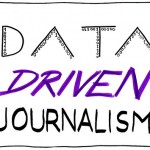April 19th, 2011 — Uncategorized Tagged "Preserve, America was under attack, Andrew Card, Card discussed his tenure with Bush, decision to go to war, Leave No Child Behind Act, protect and defend"
The video conference with Andrew Card, the former chief of staff for George W. Bush, was an experience that doesn’t come too often. It isn’t common for people to be a part of a video conference with someone that used to be high up in The White House, so this should be treasured for a long time.

In the conference, Card discussed his tenure with Bush, mostly focusing on the tragedy of September 11, 2001, and also discussed how he got into politics, the war in Iraq and today’s American government.
Card was Bush’s chief of staff from 2000-2006, and basically his “main man” and “go to guy” in times of trouble. As the chief of staff, Card had to face probably the biggest challenge of his life. That was to inform the president that the towers went down in the World Trade Center.
“I remember when I had to tell him that the second plane had hit the second tower. I knew right then that America was under attack.”
It was also very rare for a president to be interrupted during an event, as Bush was in an elementary school, reading to some students.
The decision to go to war was also a decision that took a lot of time. “We were comfortable with the decision to go to Iraq, even though President Bush originally did not want war. Bringing democracy over there has been very difficult.”
Over Bush’s eight years, there has been plenty of criticism from both sides on how he and his staff handled things in The White House. Plenty of the criticism circled around the war in Iraq. Card believed that, over time, people will start to understand their decisions.
“I think Bush’s presidency is often misunderstood. History will be kind to him, as he demonstrated courage and made tough decisions during his presidency. He had to make unprecedented challenges.”
Card also went over what Bush’s plan was within his first nine months of being president. Bush’s main focus was education, as he and his staff helped create the Leave No Child Behind Act. There was also the initial challenge of what to do with healthcare and economics.
When asked about the difference about the first and second term of Bush’s presidency, Card had a lot to say. “There were lots of changes in the cabinet, which showed the reflection of the president’s priorities. The politics side played a lesser role in the second term, as Bush had to be more statesman-like. Bush also did not bring social security or immigration to where he wanted it to be.”
Card had plenty on his plate while chief of staff for George W. Bush. No matter what the obstacles were he had to face, he believed it was the he and the president’s job to, “Preserve, protect and defend” and do what he believed was right to help make our country stronger.
April 15th, 2011 — Uncategorized
Here is a list of the top blogs to use for journalism students, according to Bachelor’s Degree Online. The list comes right from the website. The blogs are from other students at various institutions, the media, photojournalism and investigative journalism.
Students
- The Spectrum: This blog from NYU’s Arthur L. Carter Journalism Institute Urban Journalism Workshop shares views from urban teems.
- Journo Student: Thoughts and Exploits: Find a discussion of magazines and more in this journalism student’s blog.
- Online Journalism Lab: This blog is written by students at Whitworth University studying the changing world of online journalism.
- Innovation in College Media: Read this blog for a group discussion on the future of social media.
- Online Journalism Review: Read this blog, the work of OJR readers and journalism students from the University of Southern California’s Annenberg School of Journalism.
- Jschool Student Blog: This blog is maintained by journalism students at Jschool: Journalism Education & Training, Australia.

Photojournalism
- Multimedia Evangelist: In this blog, you’ll learn about changes in photography and photojournalism today.
- Multimedia and Video Journalism: Find out what Robb Montgomery has to say about video journalism and multimedia.
- Multimedia Shooter: Multimedia Shooter keeps track of important news for photojournalists so you don’t have to.
- VideoJournalism: Cyndy Green’s blog asks you to think visually.
- Photojournalism From a Student’s Eye: Learn about photojournalism by reading the blog of this photojournalism student.
Investigative Journalism
- The Centre for Investigative Journalism News Blog: Get the latest in investigative journalism from this blog.
- Depth Reporting: Mark Schaver writes about computer-assisted and investigative reporting on Depth Reporting.
- The Scoop: In The Scoop, you’ll learn about investigative and computer-assisted reporting from Derek Willis.
- Help Me Investigate: Follow this blog to learn more about investigative journalism.
To find out more blogs for journalism students including blogs from journalists, the new media, educators, the news and more, visit the Bachelor’s Degree Online website.
April 15th, 2011 — Uncategorized
The 2010-2011 NBA regular season has finally come to a close. This is a happy time for those playoff teams of course, this group including the especially happy New York Knicks (Finally!). However, one team is saying goodbye to their home city, as the Sacramento Kings could have played their final game in California’s capital.

Understandably, everyone in attendance Wednesday night was emotional. Kings fans filled Arco Arena that night knowing that there was a good chance that their beloved Kings were heading to Orange County next season. Unfortunately for the fans, the Kings lost 116-108 to the Los Angeles Lakers, a familiar foe that has crushed the hearts of Kings fans on numerous occasions.
Fans in Sacramento are very attached to their team. Their franchise had sold out tickets in 19 of their 26 seasons in Sacramento, as the city is experiencing a tough time. The city of Sacramento also doesn’t have any other professional sports teams, so you feel for their potential loss. I couldn’t imagine what it would be like to lose a team you are passionate about and grew up with rooting for them.
This video says it all, as the announcers say their final goodbye on the air in Sacramento. Good luck in Anaheim, where there will be a new chapter for basketball in California.
April 3rd, 2011 — Uncategorized Tagged BJ Koubaroulis
In class this past Thursday, guest speaker BJ Koubaroulis had plenty of great things to say. There were a lot of valid points he made, as it is tough to know when to start. Koubaroulis is a correspondent with The Washington Post and the Play-by-Play Voice of High School and College Sports for Verizon FiOS1 Sports. He is the host and producer of “Verbally Committed” – a CBS radio show on Washington D.C.’s 106.7 The Fan and a featured blogger with Sports Illustrated.

The first thing he pointed out was that if you want to be successful, you must start out at the very bottom and work your way up. In this process of working your way up, you learn a lot of things and ideas that will help you in the long run. Small experiences help teach you what you need to know and learn these things.
To be able to compete in the field of media, you must take on an extra skill, such as video. The more you know, the easier things will be. You should also invest in yourself, as you are your best ally.
Koubaroulis really stretched the need to get involved in more than one interest. Once getting involved in the media, you need to know most, if not all of the pieces that go with it.
A big message Koubaroulis ended his discussion with was this: Love media, but do not rely on it. What I took from it was to respect all of the qualities it has, but do not trust it. So do your own thing, and do what you have to do in media to be successful here.
April 3rd, 2011 — Uncategorized Tagged analysis, online subscription plan
According to Mark Potts’ “Recovering Journalist,” there’s a rule today that every media-business blogger has to weigh in on the New York Times’ finally announced online subscription plan. In this blog article, Potts goes over this plan, and looks at an analysis done by Felix Salmon.
The New York Times introduced this plan on Thursday. The idea of this plan is to begin charging the most frequent users of The New York Times’ Web site $15 for a four-week subscription in a bet that readers will pay for news they are accustomed to getting free.

In the analysis, Salmon discusses how the paywall won’t even cover its own development costs for a good two years, and beyond that will never generate enough money to really make a difference to NYTCo revenues. According to Salmon, this move makes no kind of financial sense for the NYT. The upside is limited; the downside is that it ceases to be the paper of record for the world. No one would take that bet.
Potts completely agrees with Salmon. As Salmon says, it doesn’t appear this is going to make a material impact on the Times’ finances. There seems to be no point in all of this, except maybe to make some sort of “we must be paid” statement. Potts’ message is this: Just wanting to be paid does not a business model make.
March 21st, 2011 — Uncategorized Tagged applications, data-driven journalism, journalism, newsrooms
In this chapter, Briggs discusses how information in our lives is going to keep growing as time goes on. So, it’s time to digitalize your life. What does that mean exactly? Well, in short, it has something to do with keeping all of your information in order and making sure you are constantly updated with the new information being passed around. It’s quite possible no one will ever know for sure.
Quite often people may get the feeling of frustration that somewhere out there exists the cool new thing you need to help you with your latest task. The problem is that it just doesn’t seem worth the time and energy to try out new products.

Hey people, here’s a little advice: in most cases, the return is worth the investment. Since a lot of applications are new things are for free, there are no barriers in trying new things! All journalists have the skills to go out and search for these new things, so go get them!
Information, information, information. Data, data, data. My head is already spinning. Every profession, and every industry is going through data overload. Most of them are learning how to leverage them over time. So how does this relate to journalism?
Just think of all of the information that passes through newsrooms every day. With all of the information they get, where does it go? How do you manage all of this information. The answer is that these news organizations and journalists store their information electronically with spreadsheets and shared databases.
Overall, this chapter talks about managing your information and using that information wisely. The possibilities for data-driven journalism are endless, so you will want to use this after experiencing the power and ease of working with structured data. Remember, information is passed around everywhere, so keep it in order.
March 21st, 2011 — Uncategorized Tagged storyboarding, visual journalism
In this chapter, Briggs discusses everything there is to know about visual journalism. This type of journalism is all about telling compelling stories that connect an audience with subjects, people and issues. As wide of a range this subject may cover, video journalism is very easy to learn.

Chapter 8 is all about the following points:
- Capturing quick video highlights, not documentary projects
- Managing digital video on your computer
- Using common software to edit video
- Choosing online video hosting services
- Driving audience to your video
One thing that is very important to do when using visual journalism is storyboarding. This is what we are currently doing with our multimedia project. Storyboarding is a visual sketch of the story, separated into different parts so it ca be organized.
Most of all, storyboarding helps you gets you to think about the focus of the story: What’s the main idea you want to get across to the viewer? That is key when starting a storyboard, because you don’t want to miss the focus of the story.
Also, when shooting the video, be selective in shooting, avoid panning and zooming, hold your shots, be silent when you shoot and make sure to frame the picture and compose.
It is best to start small rather than to start big when shooting a video. You don’t want to do too much, so before heading out on an assignment, it’s a good idea to get comfortable with how to shoot and what to shoot.
March 7th, 2011 — Uncategorized Tagged Change its corporate logo and slogan, Gannett, latest blog post, millions used to change this slogan
“Circulation is down. Ad revenue is down. Staffers are facing week-long furloughs, yet again. There are whispers that USA Today is in trouble. The classifieds business is pretty much gone. Newspapers are dying. The broadcast business isn’t much better. Even the company-backed Newseum is a disaster.”
That quote was taken from Mark Potts’ latest blog post and I think that it speaks for itself. The question that now remains is, what to do about that now? Not only that but, what’s Gannett, a leading media and marketing solutions company, going to do?
Change its corporate logo and slogan, of course.

The focus of this blog post is Pott’s opinion on the stupidity of this company and how changing the slogan to, “it’s all within reach,” gains nothing. It also doesn’t make up for laying off most of the company’s designers in a cost-cutting move.
Instead of the millions used to change this slogan and logo, these dollars could have been used to keep Gannett staff from being fired, or to help create new innovations that benefitted the company. Or why not hire a few more reporters for the company?
As Potts says many times in this blog post, “this is not so smart” at all.
March 7th, 2011 — Uncategorized Tagged anchor, biggest traffic draw, Daily Beast/Newsweek hybrid, Daily Dish blog, Tina Brown, very well put together
According to Mark Potts, he has been noticing something about his news consumption over the past few months. While he rarely has looked at newspapers the past few years, and rarely looks at newspaper Web site home pages and consumes a huge amount of news via RSS feeds and Twitter, one site has emerged as his go-to “front page” for news. That is, Andrew Sullivan’s Daily Dish blog.

Apparently Sullivan’s blog has been drawing interest from many people. In fact, it has been the biggest traffic draw on The Atlantic’s Web site, accounting for fully a quarter of its traffic. That has to say something! Also, journalist Tina Brown has now taken Sullivan to be an anchor for her “every-more-interesting” Daily Beast/Newsweek hybrid.
According to Potts, Sullivan’s blog is very well put together, includes an old-school front page, and has an engaging smorgasbord of news, with commentary, that provides readers with a guide to a wide range of topics. What more can you ask for here?
Could it be possible that people could completely ditch their newspapers for blogs like Andrew Sullivans? If people want to see their news in a new and different way, why not start here?
March 7th, 2011 — Uncategorized Tagged Matt Ingram has it here, Newspaper Execs: Still Denying, progress report, Still Crying and Still Lying to Themselves
The period of September through December was a dry one for Mark Potts. There were no blog posts on his “Recovering Journalist” blog because he was just plain tired of “repeating himself over and over again.” He must have a point because sometimes, you just run out of things to talk about.

However, his main reason was that he was more and more frustrated by the media industry’s inability to make the fundamental changes in product, technology and business model that are needed for survival. He claims that the shift from traditional media to digital continues at a rather slow pace.
Mark Potts’ advice to the reader is to click these posts by a couple of the smarter people on the subject of the future of media:
- And John Paton, the smartest newspaper executive of all (mostly because he refuses to define himself as a newspaper exec), with a progress report on the massive changes he’s pushing through at once-moribund Journal Register. (If you want the summary version of John’s presentation, Matt Ingram has it here.)
My advice is to read these posts from these two journalists, and as Potts would say, “if you care about the future of journalism and the media business, you have to read and learn from them. They’re telling the truth about what’s happening and what desperately, urgently needs to happen.”









